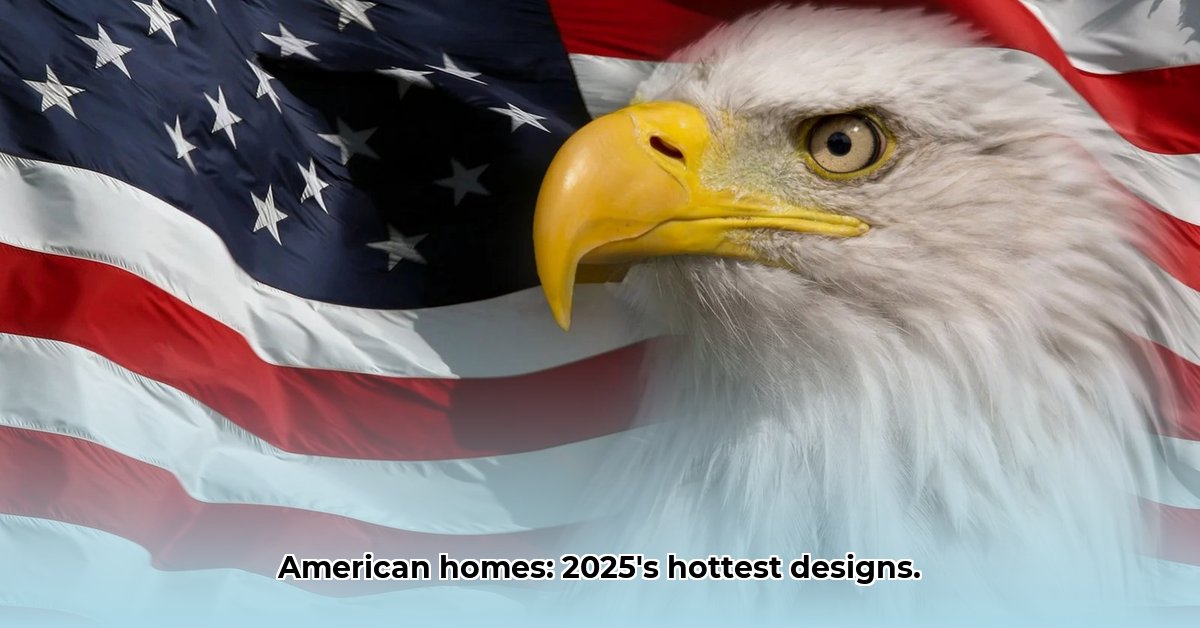Picking out a new home can be exciting, but also a little overwhelming! This guide simplifies the key differences between modern and New American house styles to help you discover the perfect fit for your lifestyle. We’ll explore their distinct aesthetics, practical liveability, energy efficiency, and long-term considerations. Whether you’re drawn to sleek, modern lines or the familiar charm of New American homes, we’ll provide the insights to make the best, most informed choice for your taste and budget. Let’s embark on the journey to find your dream house! For more modern design inspiration, check out these modern house design ideas.
American House Designs: Exploring Modern Styles and Trends
Choosing a home style can feel like navigating a maze, but let’s simplify it. Two popular choices today are “New American” and “Modern” designs. Think of them as a comfortable pair of jeans versus a tailored suit—both stylish, but distinctly different. Let’s explore what defines each style and see which aligns best with your preferences. What are the key factors in deciding between modern and New American designs in today’s housing market?
New American Homes: Classic Charm with a Modern Twist
Imagine a house that feels like “home” the instant you see it. New American homes achieve this by blending the best aspects of traditional styles—picture welcoming gabled roofs and inviting front porches—with modern interior updates. Expect open-concept layouts, updated kitchens perfect for cooking enthusiasts, and plenty of natural light. These homes feel familiar and often offer more budget-friendly construction costs. They’re a reliable choice for those who appreciate a classic aesthetic combined with modern conveniences like updated appliances, energy-efficient heating, and contemporary finishes. They’re like that dependable friend you can always count on. New American homes constitute a significant portion of new builds, especially in suburban areas. According to the National Association of Home Builders, they represent around 60% of new suburban construction.
Modern American Homes: Minimalist Aesthetic and Sustainable Living
In contrast, Modern American homes emphasize clean lines, sleek simplicity, and functionality. Imagine open floor plans that maximize space, expansive windows that flood interiors with natural light, and a minimalist aesthetic that is both striking and calming. These homes frequently prioritize sustainable materials and energy-efficient designs—think solar panels and smart thermostats—making them eco-conscious and potentially more cost-effective to run over time. While the initial investment may be higher, the long-term savings and unique style can be well worth it. They represent a bolder statement, appealing to those who value individuality and forward-thinking design. Modern homes can reduce energy consumption by up to 40% due to their advanced design and materials, according to the U.S. Green Building Council.
Who’s the Right Buyer for Each Style?
The choice ultimately depends on your personal preferences and budget. If you value comfort, familiarity, and a timeless aesthetic, a New American home may be the perfect fit. They are often more affordable to build and appeal to a broader range of buyers.
However, if you’re drawn to bold design, sustainable living, and a unique aesthetic, a Modern American home could be your ideal match. While these homes often have a higher initial price, they offer a distinctive appeal and potential long-term cost savings through energy efficiency. They tend to attract buyers who prioritize environmental responsibility and a personalized living space.
Navigating the Housing Market: Pro Tips for Buyers and Builders
For Home Buyers: Conduct thorough research! Explore various designs online, browse architectural magazines, and visit open houses to get a feel for different styles. Determine what features are most important to you, such as a spacious backyard, a gourmet kitchen, or a dedicated home office. Then, set a realistic budget, considering not only the purchase price but also closing costs, potential renovations, and ongoing maintenance expenses. Don’t hesitate to consult with a qualified real estate agent or an experienced architect for expert guidance.
For Home Builders: With strong demand for both New American and Modern homes, understanding the nuances of each style is crucial for success. Consider using prefabricated components to streamline construction and reduce costs. Emphasize energy-efficient building practices, as this is a major selling point for today’s environmentally conscious buyers.
Peeking into the Future: What’s Next in Home Design?
Several trends point to how New American and Modern styles may evolve. We can expect both styles to incorporate even more sustainable materials and advanced technology. This includes self-regulating heating and cooling systems, integrated smart home features, and the expanded use of recycled and reclaimed materials. Continued research into sustainable construction methods will likely shape future designs, making homes both stylish and environmentally responsible. Furthermore, we can anticipate a greater emphasis on unique and personalized design elements. The future of home design is promising!
A Quick Glance: New American vs. Modern
| Feature | New American Style | Modern American Style |
|---|---|---|
| Look & Feel | Traditional charm with modern updates | Clean lines, minimalist aesthetic, open spaces |
| Materials | Classic materials, often with eco-friendly options | Sustainable, innovative materials emphasized |
| Budget | Generally more affordable to build | Potentially higher initial costs, lower long-term |
| Energy Use | Moderate energy efficiency | High emphasis on energy efficiency |
| Buyer Type | Those seeking familiar comfort, classic feel | Buyers who value uniqueness, sustainability |
Your Next Steps: Making the Right Choice
-
Research Extensively: Dedicate time to exploring various floor plans and design styles. Online resources, architectural magazines, and visits to model homes are excellent starting points.
-
Define Your Priorities: Consider your lifestyle and family’s needs. Do you require a home office? A large backyard? Extra bedrooms? Prioritizing your needs will help narrow your options.
-
Establish a Budget: Create a comprehensive and realistic budget that includes the cost of the land, permits, and any potential renovations, in addition to the home itself.
-
Seek Professional Guidance: Consult with experienced architects, reputable builders, and knowledgeable real estate agents for expert advice tailored to your specific needs and goals.
-
Stay Informed: Keep abreast of emerging trends and innovations in home design to ensure you don’t miss out on the latest advancements and opportunities.
Building or buying a home is a significant decision, so take your time, conduct thorough research, and select a style that genuinely reflects your personality and values. Good luck!
How to Compare New American and Modern Home Building Costs
Key Takeaways:
- Modern home construction often involves higher costs compared to traditional builds, with prices potentially ranging from $350,000 to over $3,000,000.
- Material costs typically constitute around 75% of the total expenses, with high-end materials significantly impacting overall costs.
- Skilled labor is crucial for the intricate details of modern design, resulting in substantially higher labor expenses.
- Regional variations in land costs, labor rates, and material availability can significantly affect project costs.
- Careful planning and selecting cost-effective alternatives are essential for effective expense management.
Deconstructing the Costs: Modern vs. New American
So, you’re envisioning a new home – but which style best fits your needs: modern or New American? The decision hinges not only on aesthetics but also on budgetary considerations. How can you effectively compare the building costs of New American and modern homes? A thorough examination of the specific factors driving these cost differences is essential.
Material Mayhem: Where the Money Goes
Modern homes often require premium materials such as expansive glass walls, custom-designed windows, and unique finishes. These selections significantly increase material expenses compared to New American builds, which may utilize more readily available and cost-effective materials. The principle is simple: higher quality materials generally translate to higher costs.
Labor’s Lion’s Share: Specialized Skills, Higher Prices
The complexity of modern design tends to inflate labor costs. Intricate details, precise engineering, and specialized installations (like flat roofs) necessitate highly skilled professionals. These specialists command premium rates, which inevitably increase the final price tag. New American constructions, often using more standard designs and commonly available materials, typically require less specialized labor. Modern home construction can increase labor costs by 20-30% due to the specialized skills required.
Location, Location, Location: The Geographic Factor
Regional disparities strongly influence building costs. Land prices in urban centers tend to be higher, as are labor rates in certain regions. Material availability and local regulations also play critical roles. A modern home build in a bustling city will likely cost considerably more than a similar project in a rural area. “Land costs in metropolitan areas can constitute up to 50% of the total building cost,” according to a 2024 report by the Urban Land Institute.
Comparing Apples to Oranges: A Step-by-Step Guide
To effectively compare costs, follow these steps:
- Define Your Scope: Clearly outline your desired home size, features, and finishes for both styles (modern and New American) to ensure an accurate comparison.
- Material Selection: Research the costs of materials for each style. Compare prices between standard and premium options to understand the potential cost range.
- Labor Estimation: Obtain quotes from contractors specializing in both modern and New American construction to understand the different labor costs associated with each build.
- Site Analysis: Factor in site preparation, permitting fees, and any location-specific costs to get
- Glass Tile Shower Ideas to Create a Stunning Bathroom Space - December 7, 2025
- Glass Wall Tile Ideas for Kitchens and Bathrooms - December 6, 2025
- Glass Tile Bathroom: Create a Beautiful, Easy-Clean Space - December 5, 2025










